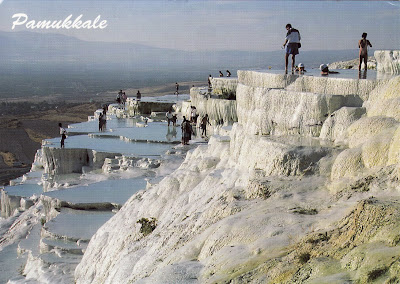Date of Inscription: 1988
Criteria: (iii)(iv)(vii)
Property : 1077.0000 ha
Denizli Province
N37 55 26.004 E29 7 23.988
Ref: 485
Deriving from springs in a cliff almost 200 m high overlooking the plain, calcite-laden waters have created at Pamukkale (Cotton Palace) an unreal landscape, made up of mineral forests, petrified waterfalls and a series of terraced basins. At the end of the 2nd century B.C. the dynasty of the Attalids, the kings of Pergamon, established the thermal spa of Hierapolis. The ruins of the baths, temples and other Greek monuments can be seen at the site.
http://whc.unesco.org/en/list/485
With many thanks to my dear Pinar from Turkey and thanks all postcrossers who signed the card! !


.jpg)






















.jpg)






